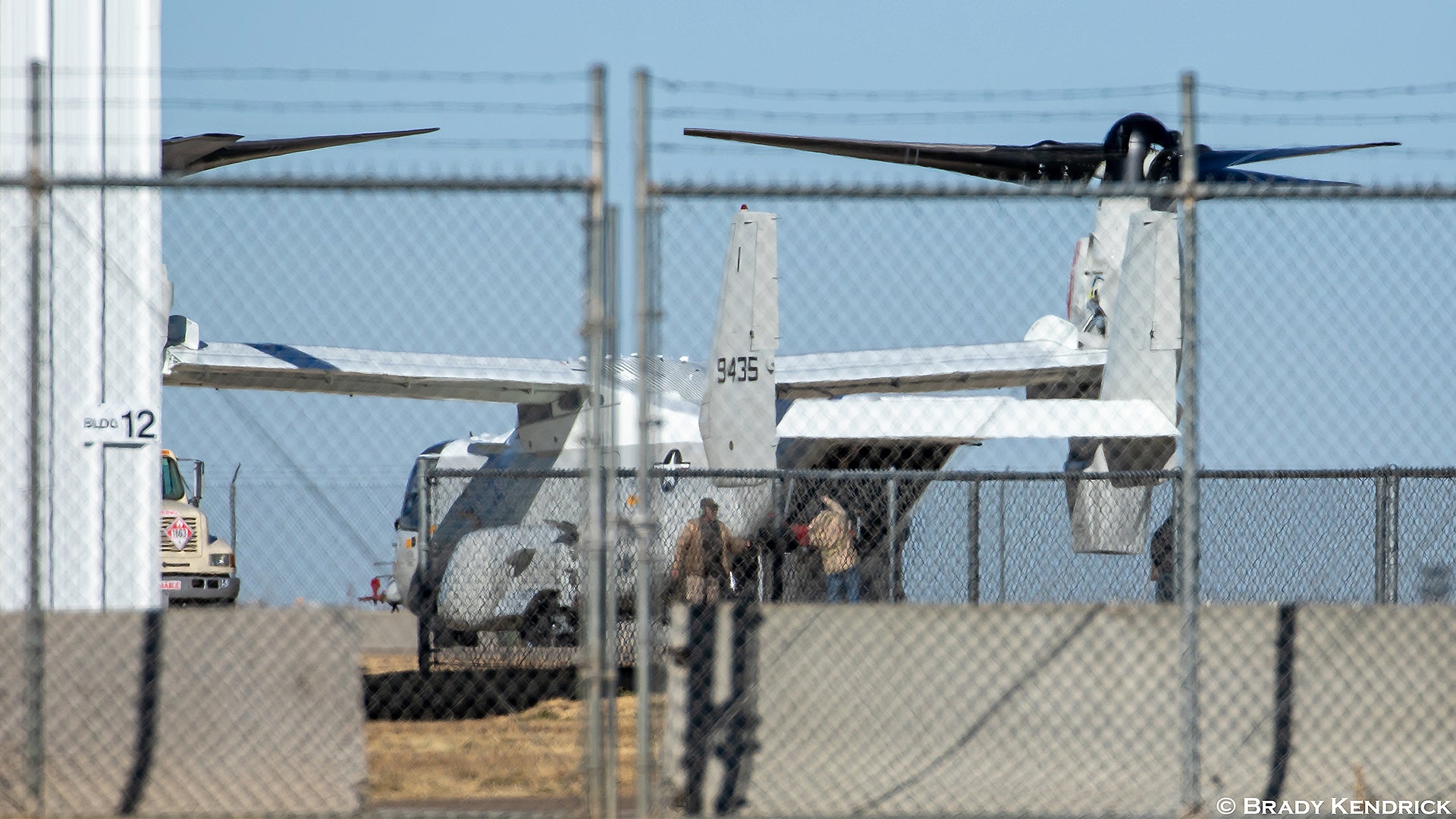Bell’s CMV-22B Osprey Carrier Onboard Delivery (COD) aircraft program is moving at a blistering pace. It won’t be long before the venerable Grumman C-2A Greyhound starts winding down its long career with the Ospreys taking their place. This was a controversial decision for the Navy, but that time has past and the seagoing force is slated to receive its first CMV-22 soon. We have an exclusive photo of the very first CMV-22B and its dressed in a full-on Navy COD hi-viz paint scheme. The image was shot outside of the Bell plant in Amarillo, Texas by aviation photographer Brady Kendrick on December 10th, 2019.
The most notable structural difference between existing V-22 variants and the CMV-22B that can be seen in the photo is the bulbous fuel tank extensions to the forward portion of the sponsons on either side of the aircraft. This modification is critical to providing the CMV-22 the necessary range to work in the COD role during so-called ‘blue water’ operations, when the carrier strike group is far out to sea.
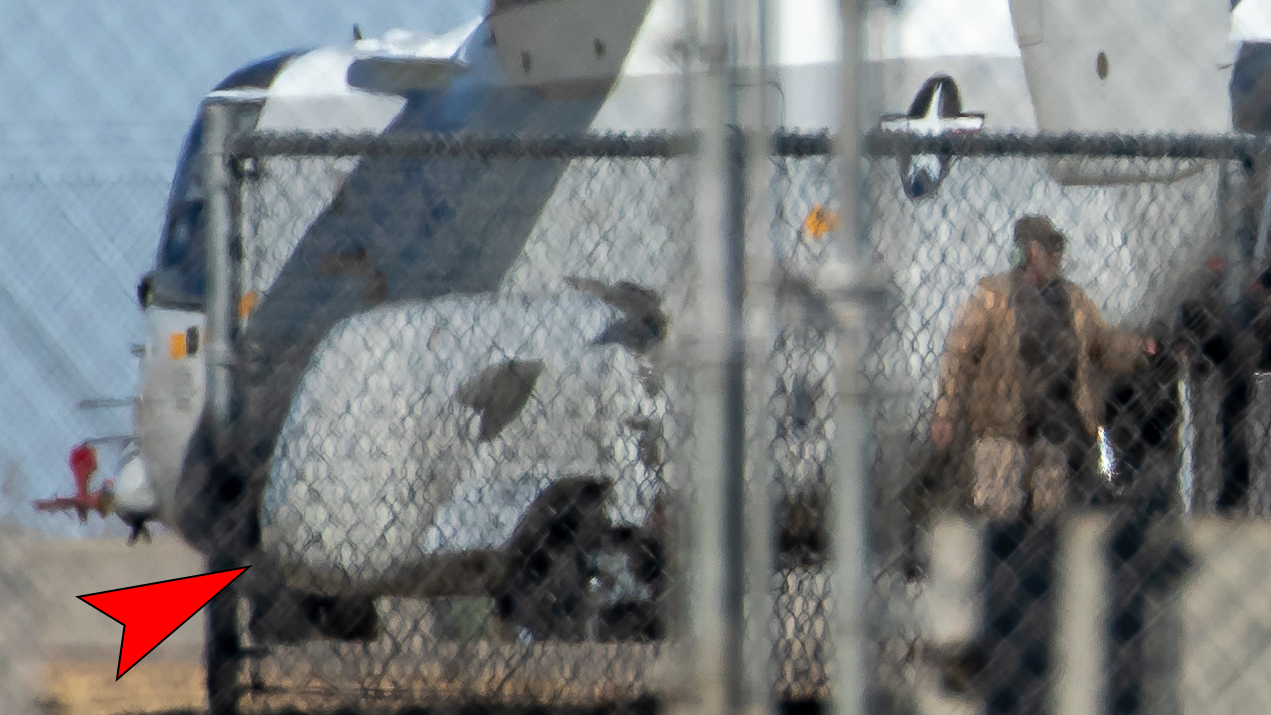
You can also get a rough idea of this modification in artist renderings of the CMV-22B concept, like the one below.
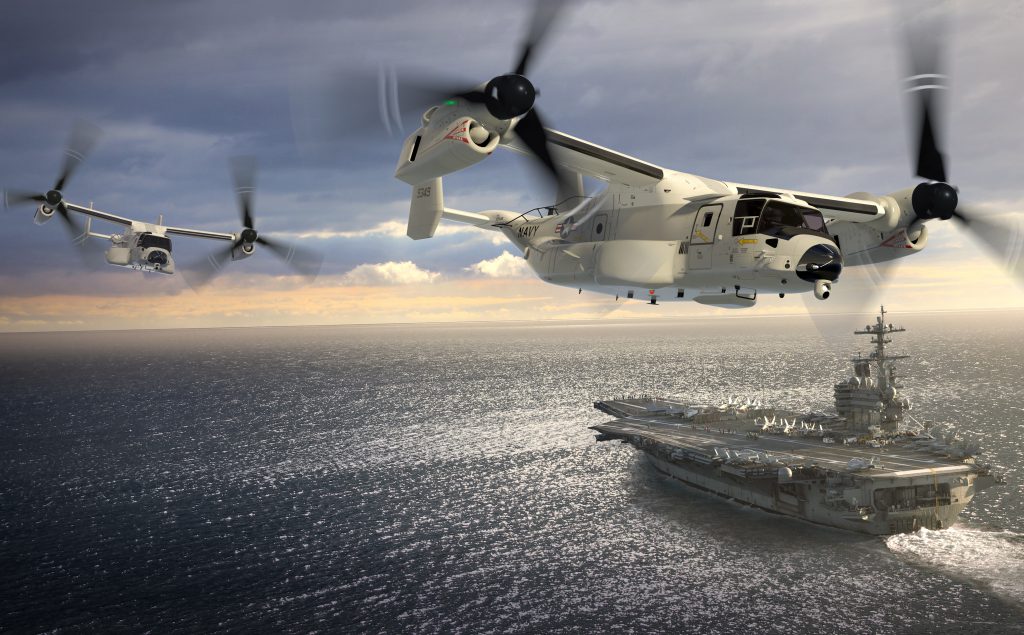
The Navy has been moving ahead at a brisk pace with its CMV-22B plans since it signed the deal to buy 39 of the tilt-rotors in June 2018. This purchase was part of a larger Osprey buy, worth a total of $4.2 billion to the Bell-Boeing joint venture that makes the aircraft, which also includes 19 additional examples, a mixture of MV-22Bs for the U.S. Marine Corps and Japan and CV-22Bs for the U.S. Air Force.
In December 2018, the Navy held a ceremony to mark the activation of the first operational CMV-22B unit, Fleet Logistics Multi-Mission Squadron 30 (VRM-30), at Naval Air Station North Island in California. The service subsequently sent the initial cadre of future naval Osprey crews to train with Marine Medium Tiltrotor Training Squadron 204 (VMMT-204).
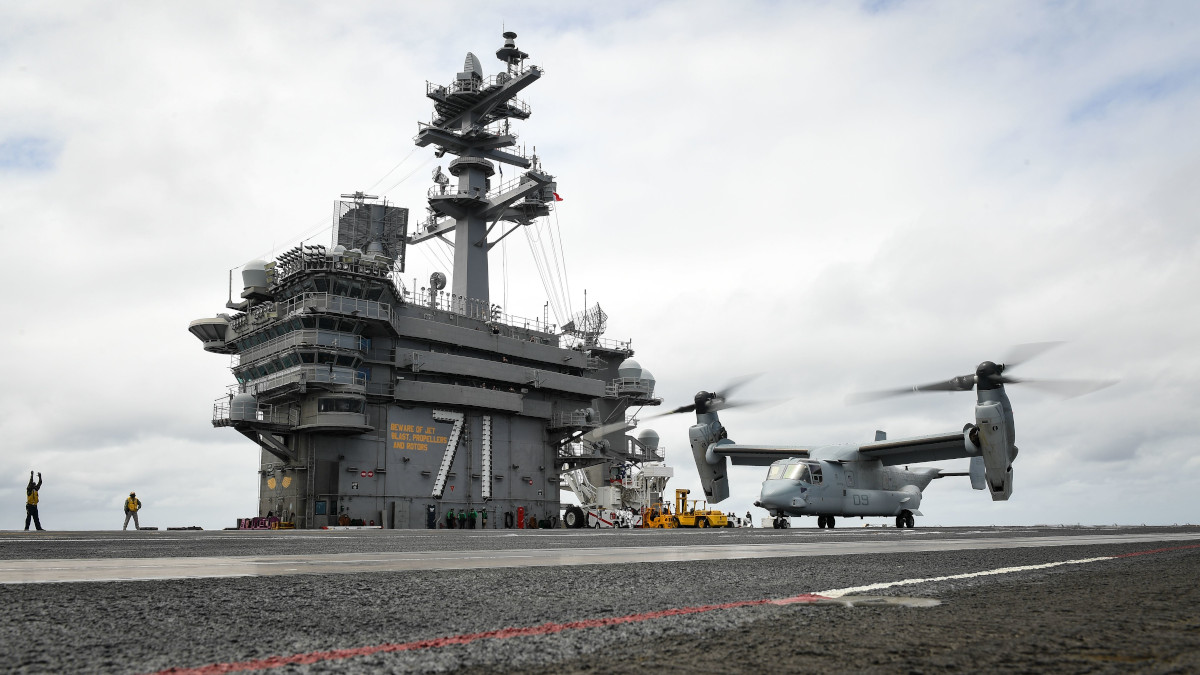
More recently, in October 2019, the Navy stood up Fleet Logistics Multi-Mission Win, abbreviated COMVRMWING, at North Island, which will eventually oversee all three the Navy’s planned CMV-22B squadrons. The service is working toward activating VRM-40, another operational squadron, and approved plans to create VRM-50, which will be a dedicated training unit, earlier this year.
North Island itself needs a host of improvements and expansions to support the project. This includes new treatments on runways and taxiways to better withstand the heat from the Ospreys’ engine exhaust when the planes are moving around in their vertical and short takeoff and landing modes.
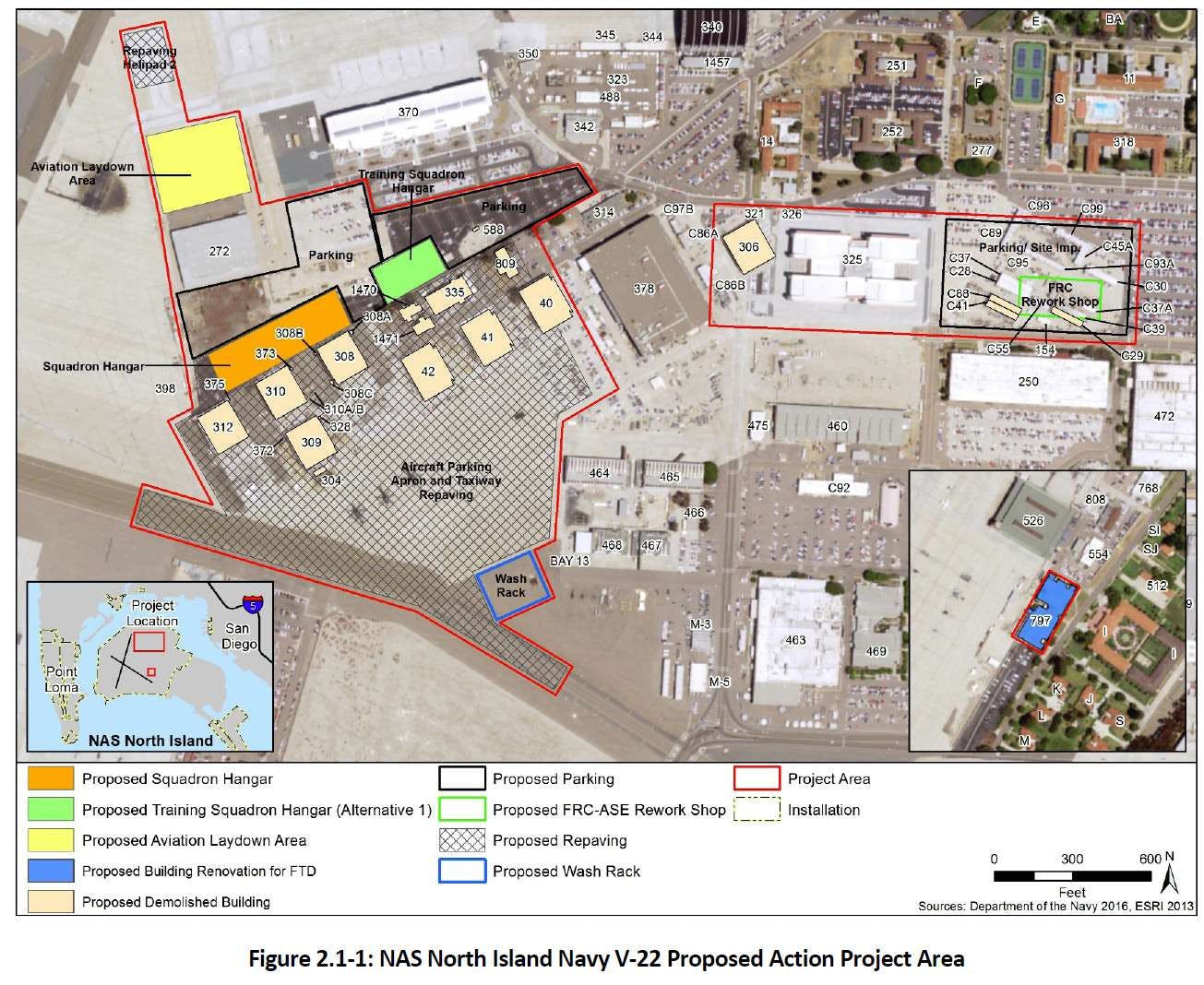
This is all in line with the plan the Navy first outlined in 2018 that detailing how it would transition from the C-2A Greyhound to the CMV-22 over the next five years, which The War Zonecovered extensively at the time. The very last C-2As are supposed to leave service between 2026 and 2028.
However, despite the imminent delivery of the Navy’s first CMV-22B, the service still does not expect to put the first examples into action until 2021, coinciding with the first operational deployment of the F-35C Joint Strike Fighter on board the Nimitz class aircraft carrier USS Carl Vinson.
“We’re targeting the first quarter of ‘21 for when we’re going to be certified safe to operate where we can start flying our own aircraft and operate as a squadron,” U.S. Navy Commander Trevor Hermann, VRM-30’s commanding officer, told USNI News in an interview in June 2019.
The Navy has long insisted that it needs the CMV-22B to adequately support F-35C deployments onboard its carriers. The service’s contention has been that the C-2A cannot carry the Joint Strike Fighter’s F135 turbofan engine, a critical issue for sustained operations.
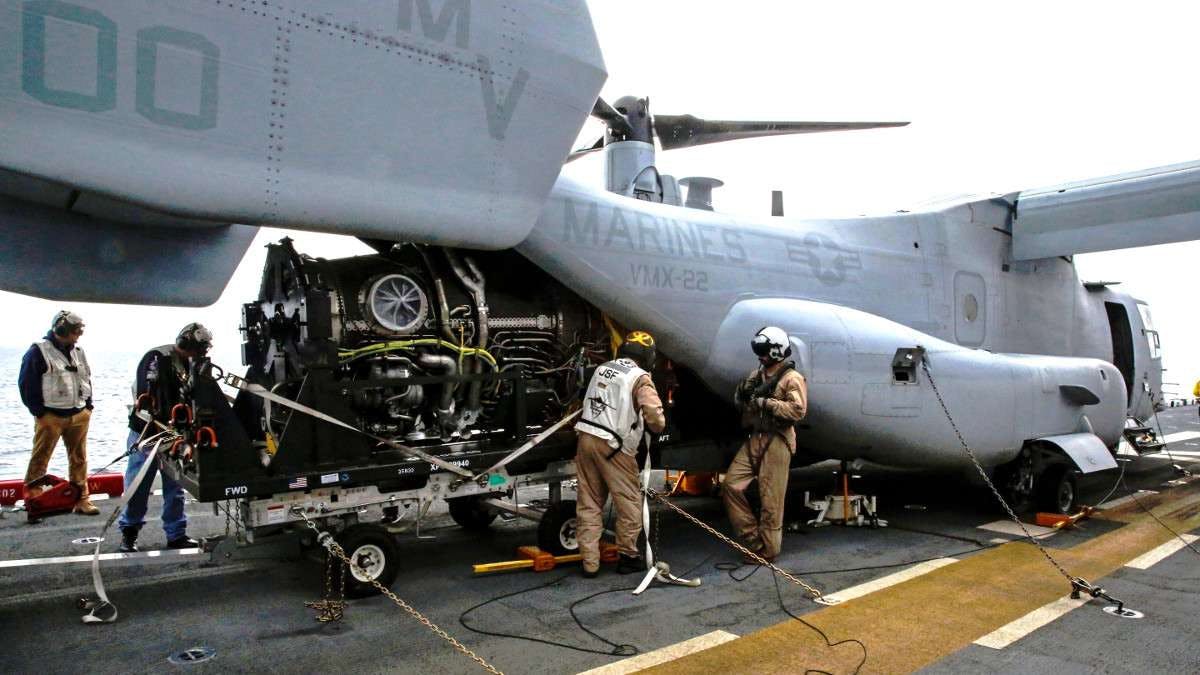
This has also been one of a number of sources of controversy regarding the Navy’s decision to replace the C-2A with the CMV-22. While the Navy is correct in stating that the Greyhounds cannot carry these engines, the process of doing so with the CMV-22B is complex and requires special equipment and procedures that are subject to very tight tolerances.
There have been other concerns about the space necessary for the aircraft to take off and land from a carrier, as well as simply maneuver around the flight deck, and whether this could slow down launching and recovering aircraft and at critical moments. Most critically, in its most compact configuration, the CMV-22B cannot move around under its own power.
Beyond that, the Osprey is not pressurized like the Greyhound, which limits its maximum altitude, especially when carrying passengers. This would prevent the tilt-rotors from simply flying over severe storms and other bad weather, forcing them to take more complicated and roundabout routes, which could make it more difficult and risky for them to fly essential missions to and from carriers regardless of the weather.
At the same time, the CMV-22 can operate from more than just carriers, which the Greyhound can’t, and can also land in more confined spots ashore. Beyond making the aircraft more flexible broadly, this also opens up the potential to completely eliminate the existing “hub-and-spoke” concept whereby COD aircraft bring cargo and passengers to the carrier and then helicopters ferry them to other ships within a Carrier Strike Group.
You can read about all of the pros and cons of the Navy’s transition plan in detail in this past War Zone story.
Regardless, the CMV-22s will be fulfilling the Carrier Strike Group’s on-demand logistics needs instead of the C-2 in the not so distant future, and now we are finally seeing exactly what the future of the carrier onboard delivery mission actually looks like.
Contact the authors: Tyler@thedrive and Joe@thedrive.com
